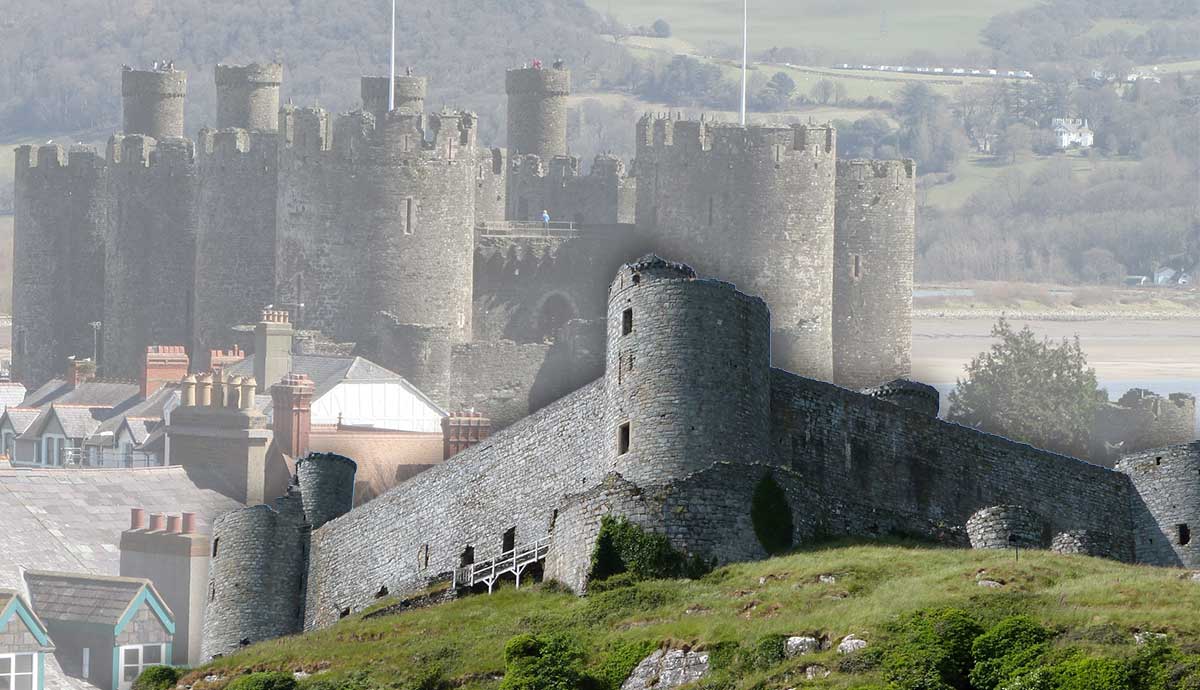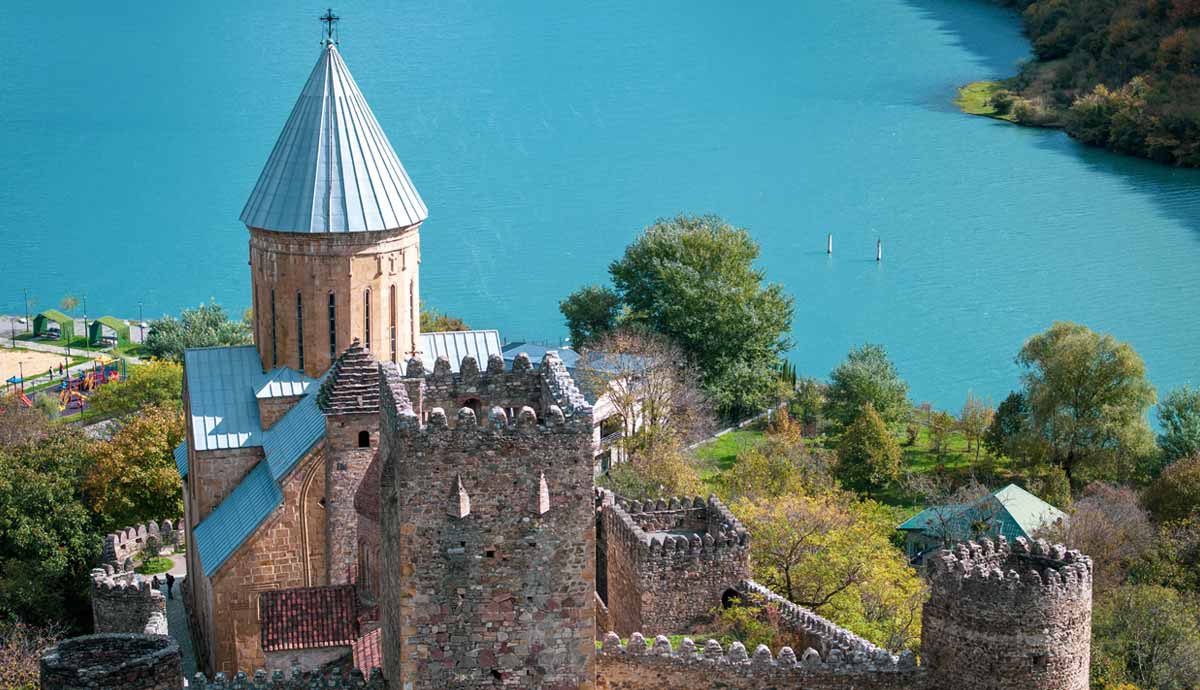
Located in the Caucasus Mountains between Europe and Asia, the country of Georgia is becoming an increasingly popular travel destination for tourists seeking history, culture, and natural beauty. Over the centuries, both Georgians and foreign occupiers have built formidable castles and fortresses to project their power and defend themselves from rivals. Read on to find out more about six of these destinations that you should not miss if you are traveling to Georgia!
1. Narikala Fortress
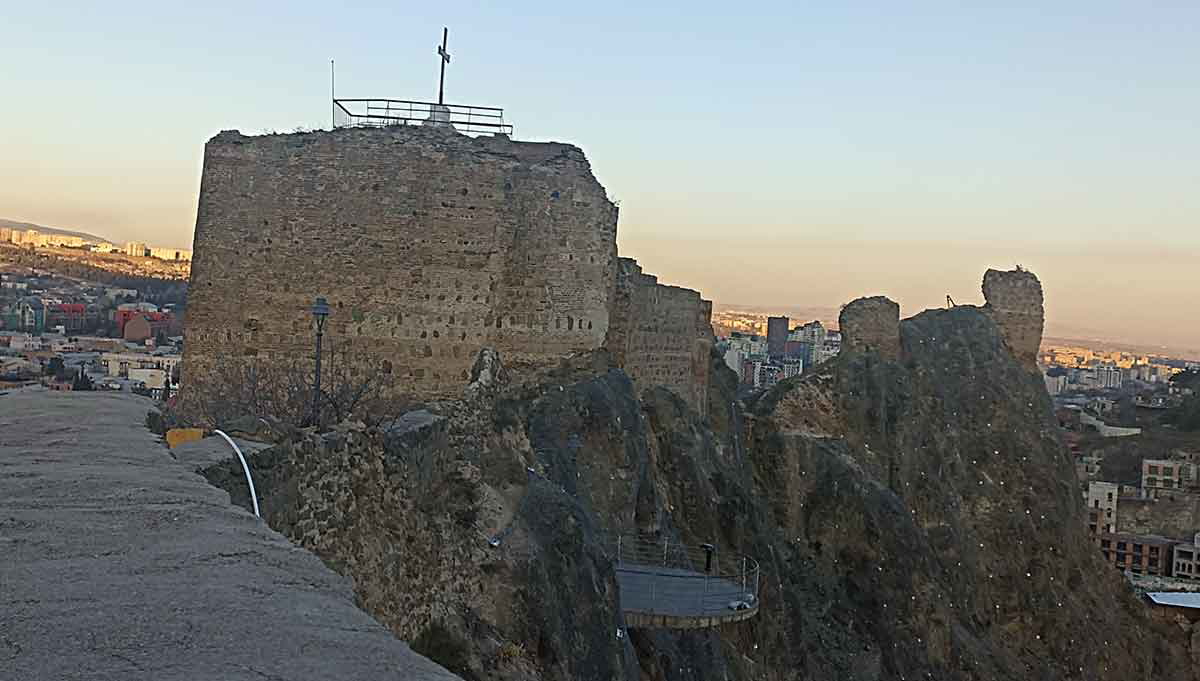
The walls of the Narikala Fortress tower over the south bank of the Kura (Mtkvari) River in Georgia’s capital, Tbilisi. The first fortifications on the site date to the 4th century CE when Georgia was under Persian rule. Over the course of Georgia’s turbulent history, the fortress has been controlled by Arabs, Mongols, Ottomans, and Georgians. The name Narikala, or “Little Fortress,” was coined during the period of Mongol rule. Most of the existing structure dates from the 16th-17th centuries.
An explosion (or earthquake) in 1827 left the fortress in ruins, leaving only the outer walls intact. In recent years, parts of the lower walls have been renovated according to the plan of the medieval castle. The Church of St. Nicholas within the walls was first built during the 13th century and substantially rebuilt in the 1990s after a devastating fire.
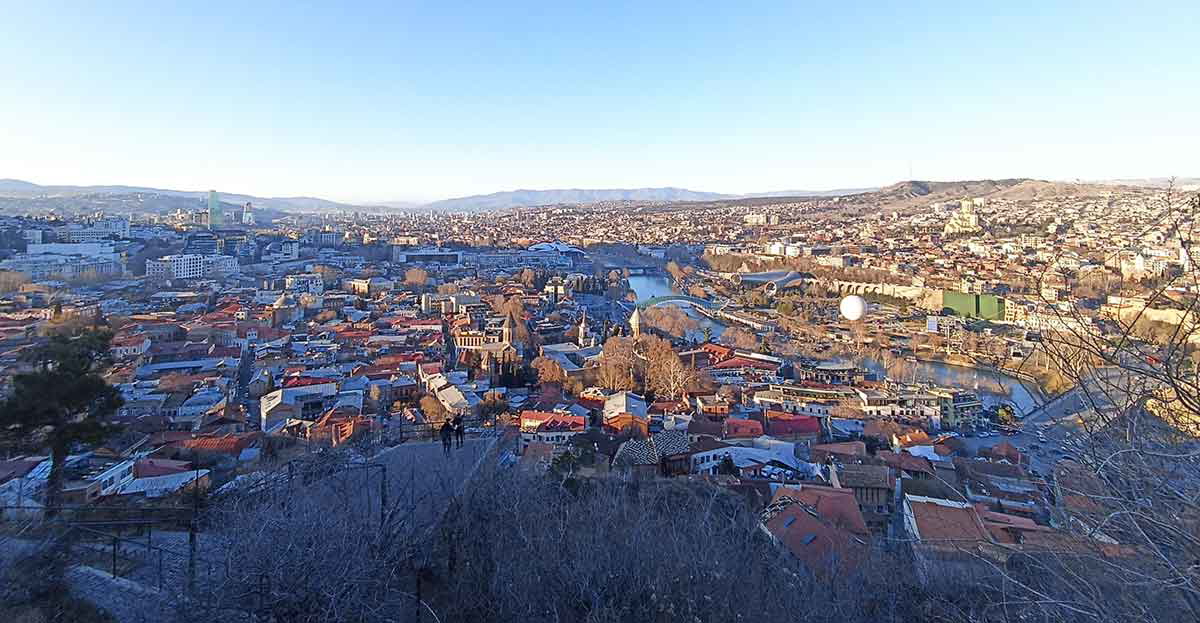
While there is little more to see within the walls of the fortress, visitors are treated to a spectacular panorama of Tbilisi from Narikala Hill. From this vantage point, it is possible to see another set of fortifications on the opposite bank of the river in the Avlabari district. During the 18th century, a palace was built on top of the walls for Queen Darejan, the wife of King Erekle II. The distinctive balcony of Queen Darejan’s Palace offers an attractive vista of Narikala Fortress and the Old Town.
Visitors to Tbilisi can reach Narikala Fortress via a cable car from Rike Park on the northeastern bank of the Mtkvari. The fortress is also accessible via a steep but picturesque walk from the Old Town. The upper station of the cable car is a short walk from the Mother of Georgia statue, which stands proudly on Narikala Hill.
Erected in 1958 to mark the 1,500th anniversary of the city’s official foundation, the 20-meter tall statue is depicted with a bowl of wine in her left hand and a sword in her right, indicating that she is prepared to meet both friend and foe. Another nearby attraction is the National Botanical Gardens, located in the valley behind the fortress.
2. Ananuri Fortress
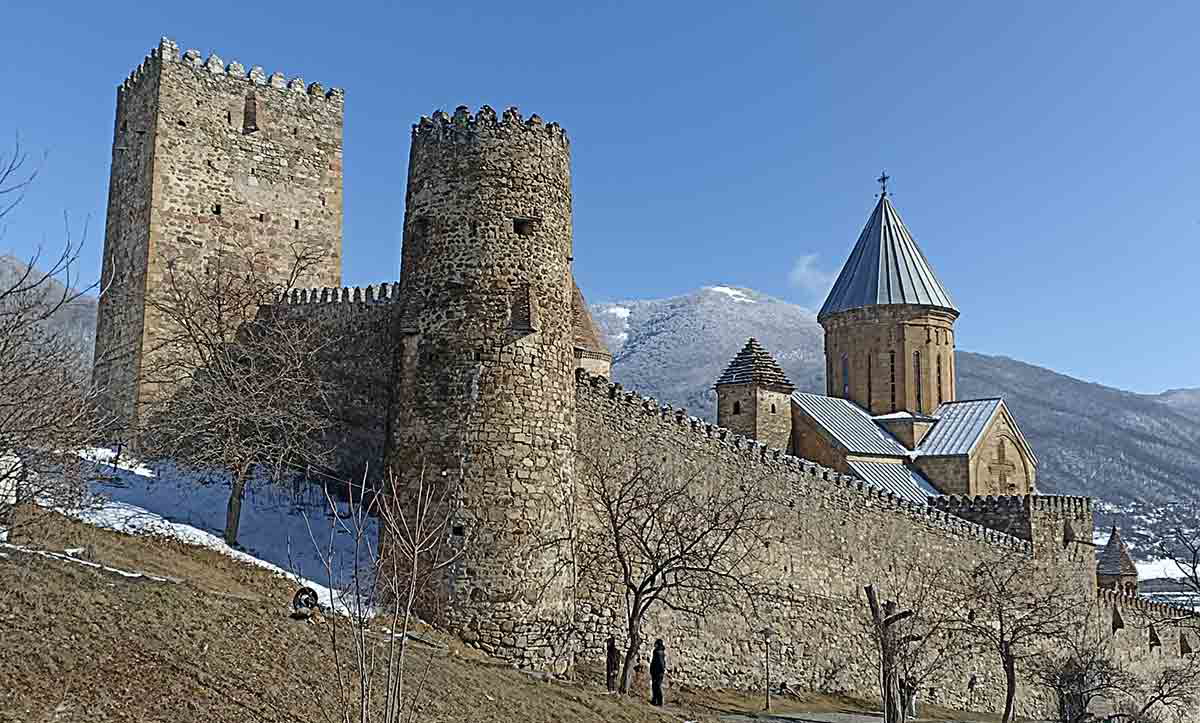
The imposing Ananuri Fortress is one of the most significant landmarks on the Georgian Military Highway, which runs from Tbilisi across the Russian border to the city of Vladikavkaz in the northern Caucasus. One of Georgia’s best-preserved medieval fortifications, the fortress overlooks the Zhinvali Reservoir on the Aragvi River.
The walls of the fortress were built in the 13th century. A popular legend tells of the fortress’ garrison being resupplied from the river via a secret tunnel while being besieged by a Mongol army. A woman named Ana from the village of Nuri was captured by the Mongols and questioned about the tunnel. She refused to give away its location and was tortured and killed, thus giving the fortress its name.
Ananuri served as the main military stronghold for the dukes of Aragvi from the 14th century until the 18th century. The fortress witnessed a series of battles in the 18th century, and in 1739, Ananuri was attacked by the rival duchy of Ksani. After a courageous last stand, the Aragvian warriors were defeated, and the ruling family was executed. In 1743, the new regime was overthrown in a peasant uprising, and by 1747, the Aragvian lands were annexed by King Teimuraz II of Kartli-Kakheti, the ruler of much of eastern Georgia.
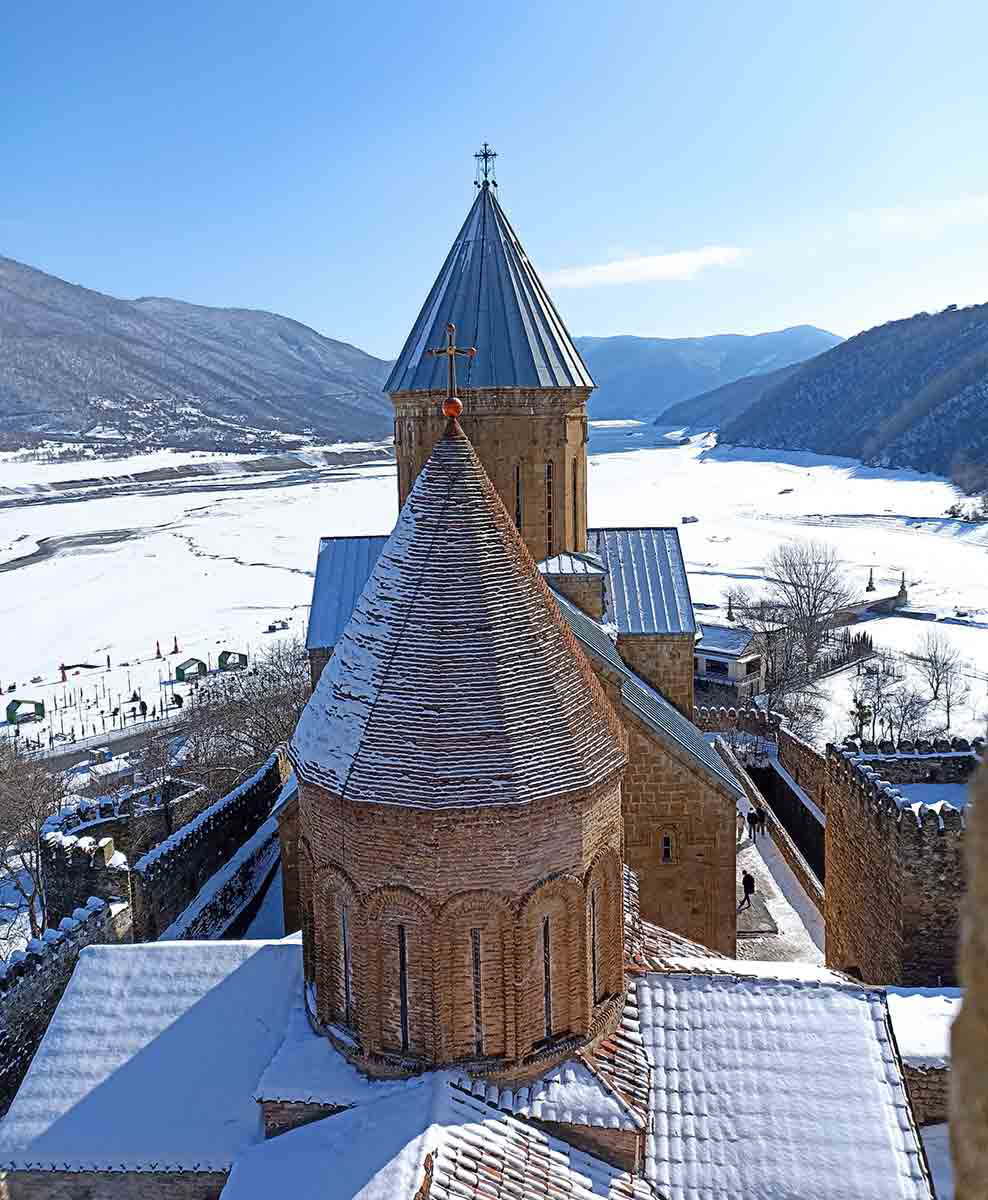
Within the walls of the complex are two 17th-century churches. The larger one, the Church of the Assumption of the Mother of God, was built in 1689 and features distinctive inscriptions in Georgian script on the walls. The frescoes within the church were partially restored following a fire in the 18th century.
The large square tower on the western side of the fortress complex is accessible to visitors via precarious walk along the walls. The tower, which was the site of the last stand of the Aragvians in 1739, offers a unique perspective on the two churches below. The present author came close to suffering the fate of the Aragvian garrison while treading the narrow, icy path along the walls during a particularly cold spell in early March 2025.
3. Akhaltsikhe Castle
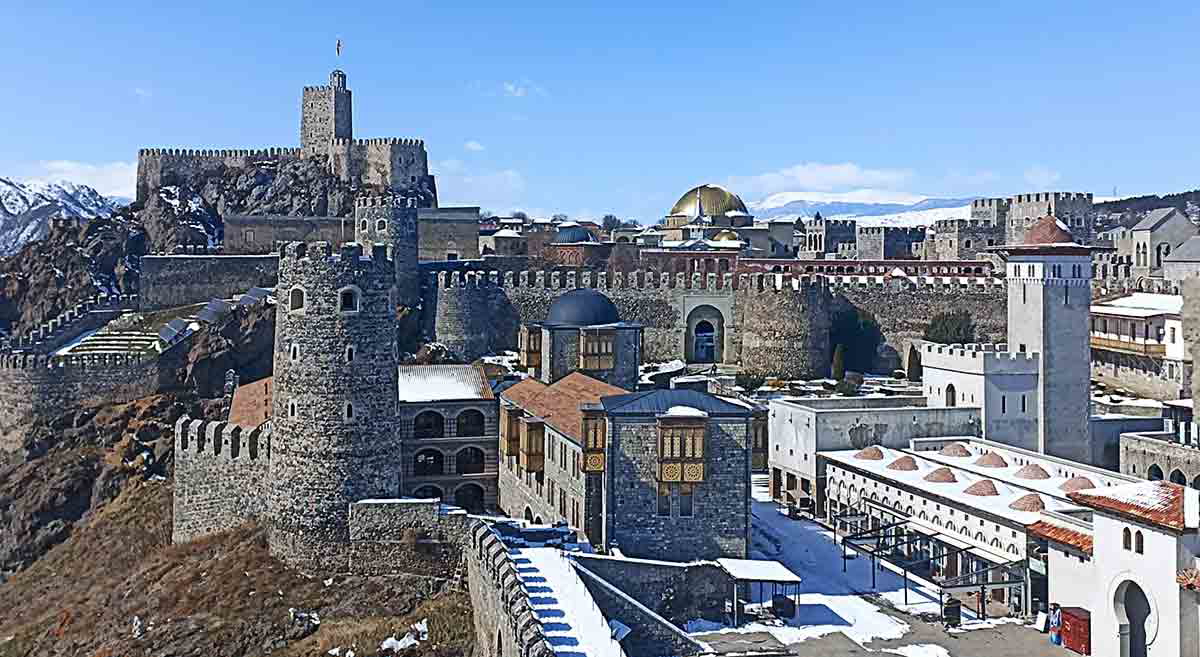
Akhaltsikhe Castle, also known as Rabati Castle, is located in the region of Samtskhe–Javakheti in southern Georgia. When the castle was first built in the 9th century CE, it was called Lomsia, or “Lion.” The castle’s builder, Prince Guaram of Tao-Klarjeti, was the son of King Ashot I, the founder of the Bagrationi dynasty that would rule part or all of Georgia until the 19th century.
The castle was expanded during the Georgian Golden Age in the 12th century and acquired the name of Akhaltsikhe, or “New Castle.” The castle consisted of three sections: a trading quarter, a palatial quarter, and the citadel on the western side. The military commanders Shalva and Ivane Akhaltsikheli, who distinguished themselves during the reign of King Tamar in the early 13th century, hailed from the ruling ducal family in the city.
By the mid-13th century, the Georgian Jaqeli family took over control of Akhaltsikhe and the surrounding Samtskhe region. In 1578, the fortress was captured by the Ottoman Empire. The Jaqelis converted to Islam and continued to rule over Samtskhe for the next two-and-a-half centuries. During this period, a mosque and a madrassah were built within the walls of the compound.
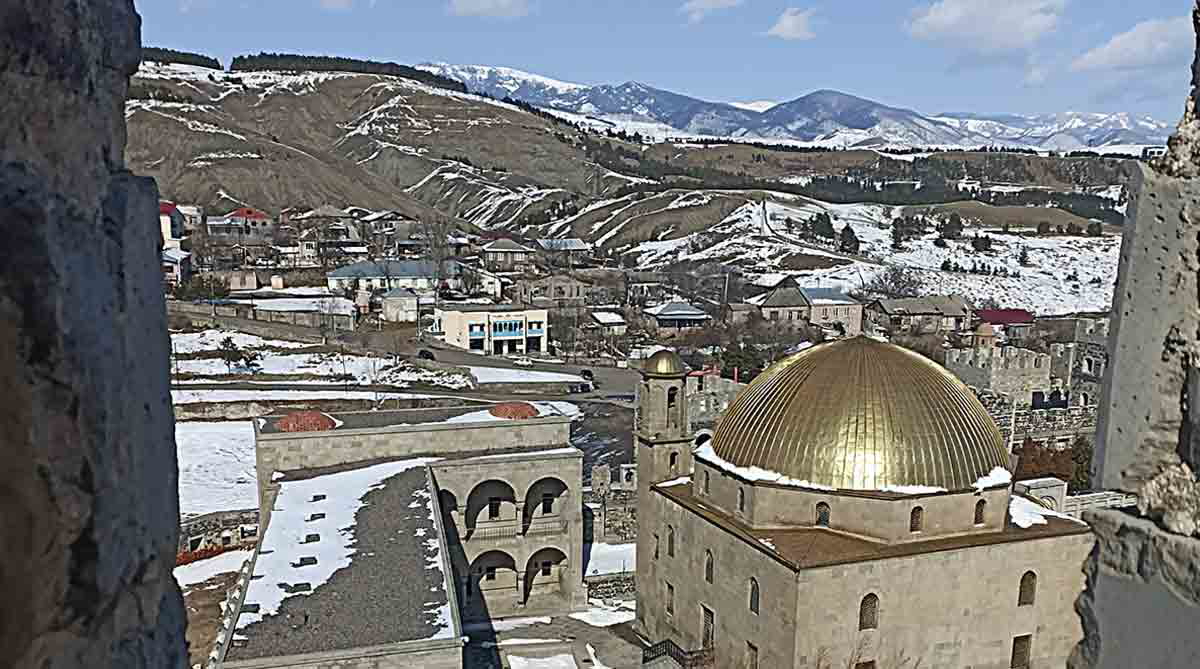
When Russia annexed Georgia at the turn of the 19th century, Akhaltsikhe remained under Ottoman rule. A Russian siege in 1810 proved unsuccessful, but the fortress was captured by Field Marshal Ivan Paskevich’s Russian army in August 1828 during the Russo-Turkish War of 1828-1829. The Russian garrison successfully defended itself against an Ottoman attack the following April.
The castle was abandoned as a military stronghold in the 19th century. It remained in ruins until 2011, when a controversial redevelopment project saw the reconstruction of the ramparts, the citadel, and a 9th-century church. Other buildings, such as the mosque and madrassah, were restored, and the former Jaqeli palace now hosts the Samtskhe–Javakheti History Museum.
Following its restoration, Akhaltsikhe Castle has become one of the most popular tourist attractions in southern Georgia. It is just over an hour’s drive from the cave city of Vardzia, another medieval site of great historical significance in Georgian history.
4. Walls of Sighnaghi
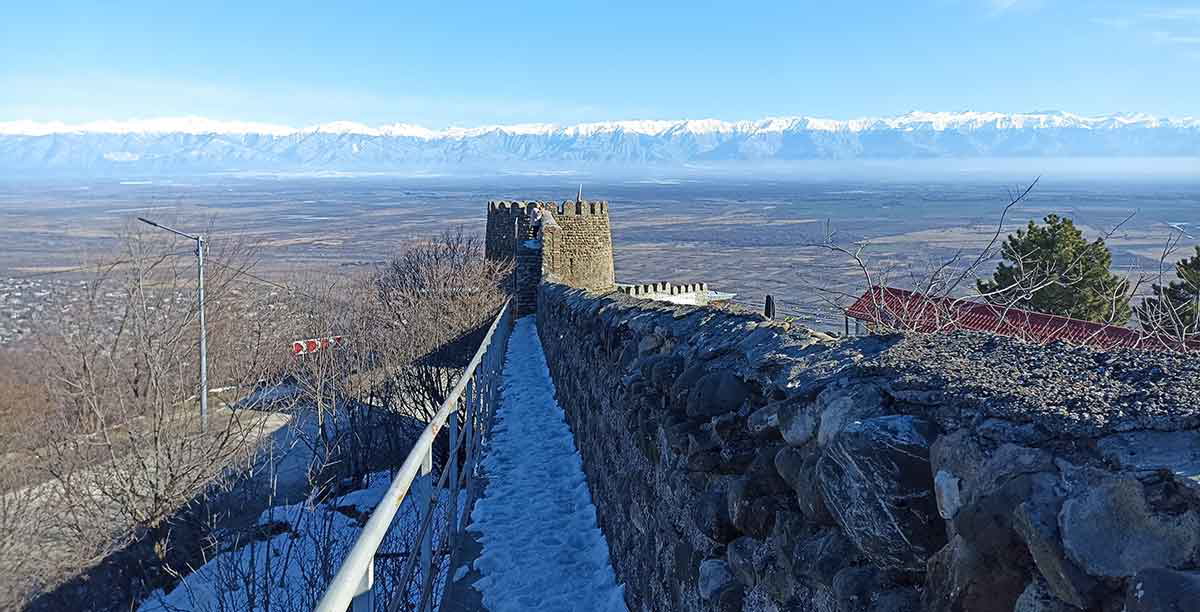
The town of Sighnaghi is one of the most popular destinations in the region of Kakheti in eastern Georgia, best known for its wine. Located on a steep hill overlooking the Alazani Valley with the imposing Greater Caucasus range in the distance, Sighnaghi is known for the ring of defensive walls that encircle the town. The walls were built during the reign of King Erekle II, who was king of Kakheti from 1744 until his death in 1798.
After Sighnaghi’s annexation by the Russian Empire, the town became an important strategic location due to its proximity to Dagestan at a time when Russian armies were struggling to pacify the Caucasus. The town was home to a large Armenian population during the 19th century, and it was not until the early 20th century that Georgians became the ethnic majority.
The town became an important agricultural center during the Soviet era, and after the fall of the Soviet Union, it has reinvented itself as a tourist destination. The combination of wine, history, and landscape has contributed to Sighnaghi’s reputation as the “City of Love,” and since the early 2000s, many Georgian couples have chosen to get married in Sighnaghi.
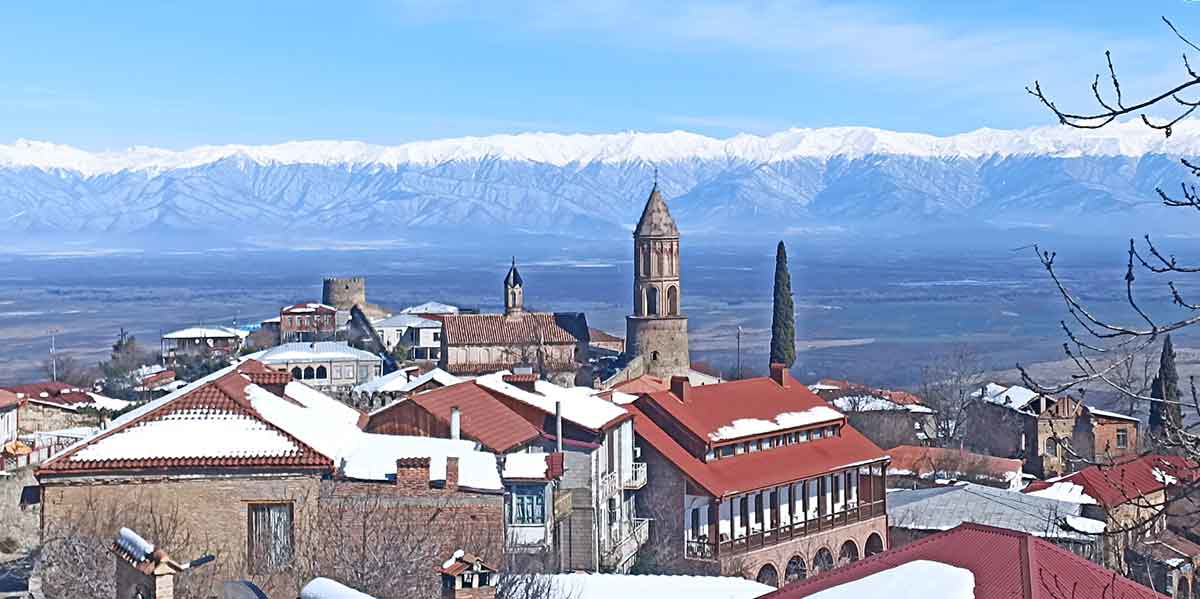
Aside from walking along the city walls and admiring the extraordinary views of the surrounding area—an endeavor best undertaken when the narrow pathway is not covered in ice—tourists in Sighnaghi can visit the Sighnaghi Local History Museum, one of the best museums in the country. A particular highlight are canvases by Niko Pirosmani, the famous Georgian artist born in the Kakhetian town of Mirzaani in 1862.
Visitors to Sighnaghi can make a detour to the ancient Bodbe St. Nino Convent, a short distance to the south of the town. The convent is one of the earliest Christian institutions in Georgia and is the burial place of St. Nino, the female saint who brought Christianity to Georgia in the 4th century CE.
5. Gremi Archangels’ Complex
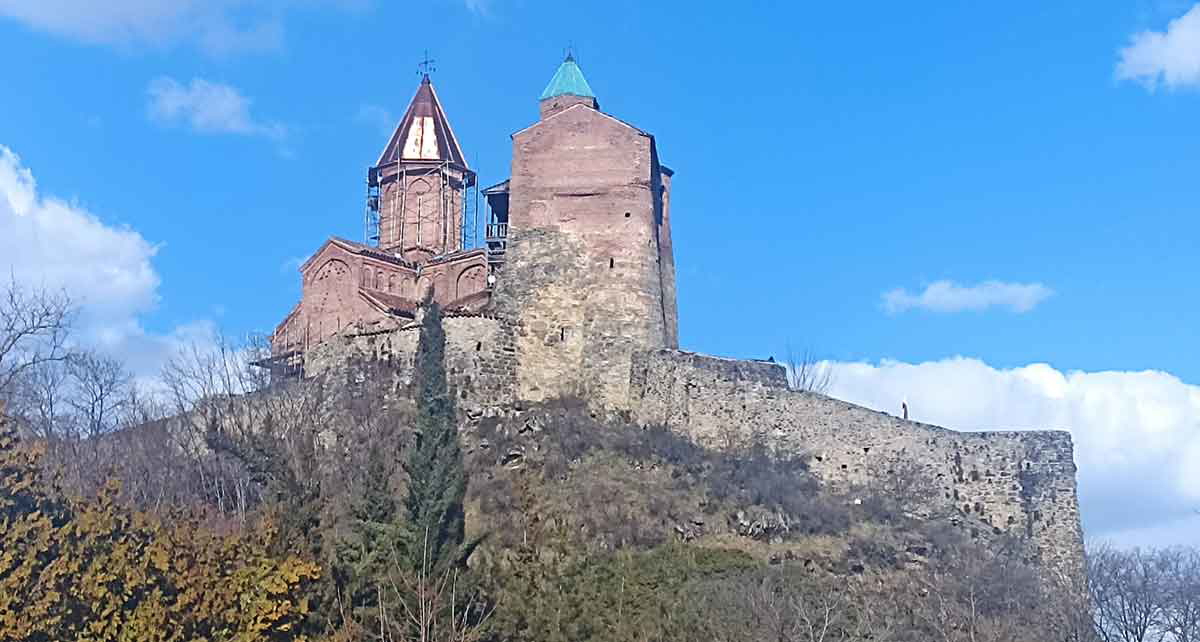
Another site of major historical significance in Kakheti is the Gremi Archangels’ Complex. Gremi was the first capital of the Kingdom of Kakheti, founded in 1466 as a breakaway kingdom by King Giorgi VIII after being overthrown as king of Georgia. The division of Georgia was formalized in 1490.
Throughout its history, Kakheti has been a wealthy region due to its established agricultural industry and location on eastern trade routes. Gremi reached its heyday during the long and prosperous reign of King Levan I of Kakheti (1518-1574) in the 16th century. Levan was responsible for the construction of the Church of the Archangels next to the royal palace and was buried there following his death.
While Levan successfully appealed to Russia to counterbalance Persian influence in his kingdom, his successors struggled to resist Persian encroachments at the turn of the 17th century when Russia was destabilized by the Time of Troubles.
The young King Teimuraz I struggled to negotiate with Shah Abbas I of Safavid Persia, and in 1614, his mother, Queen Ketevan, surrendered herself to the Persian court as a hostage in an attempt to secure peace. Her mission failed, and the Persians invaded Kakheti between 1614 and 1616, sacking Gremi in the process. The flourishing city became a shadow of its former self. Ketevan remained in captivity and was executed brutally in 1624 after refusing to renounce her faith, making her one of Georgia’s most famous martyrs.
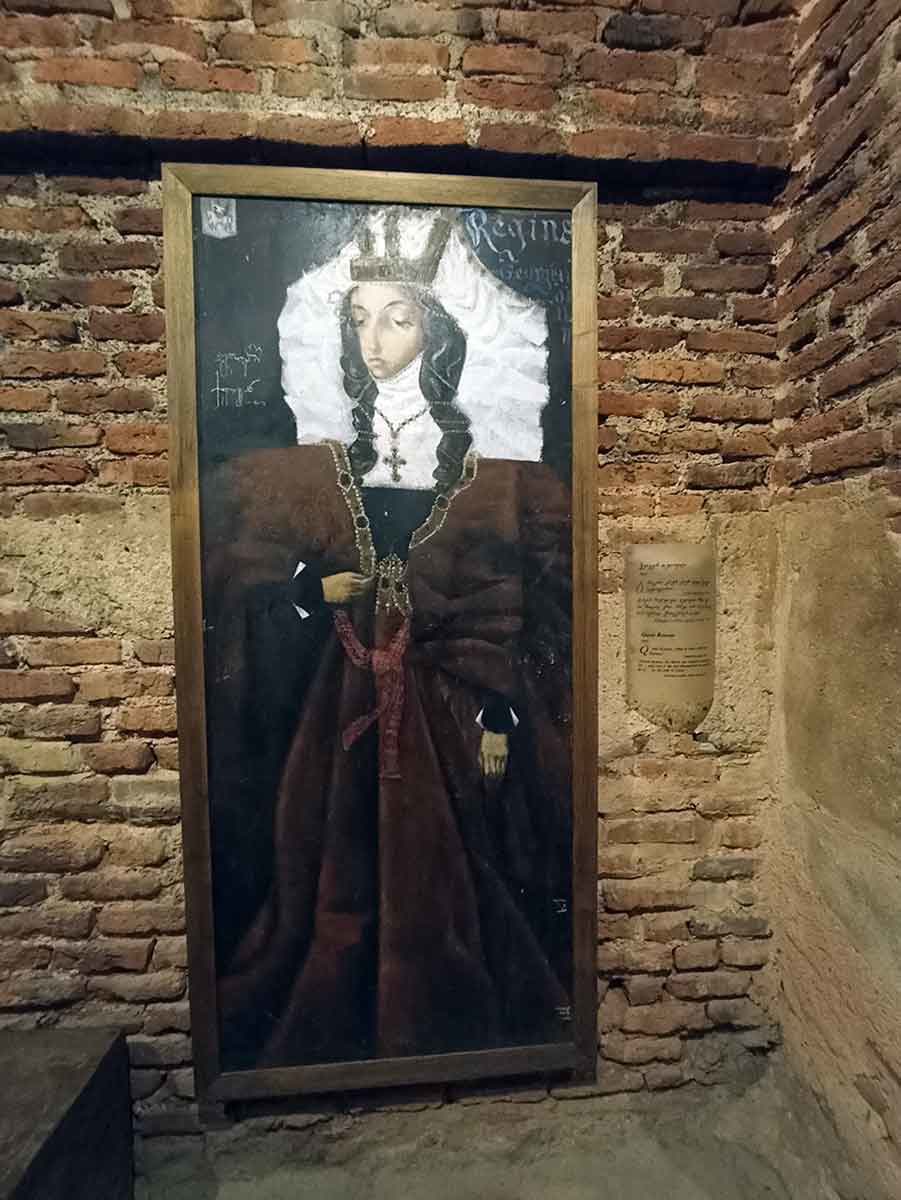
Gremi never recovered after its sacking in 1616, and in the mid-17th century, the seat of power was officially moved to Telavi, which had previously been the most important political center in Kakheti. The fortified Archangels’ Complex was the only part of the city to remain largely intact after the sacking, and the royal palace next to the church was modified into a bell tower.
Visitors to the Gremi Archangels’ Complex can find out more about its history by visiting a small but well-curated museum at the bottom of the hill for a small fee. Inside the complex, the Archangels’ Church remains a functioning church, while the palace/belltower hosts a small exhibition of paintings depicting the kings of Kakheti.
6. Gonio-Apsaros Fortress
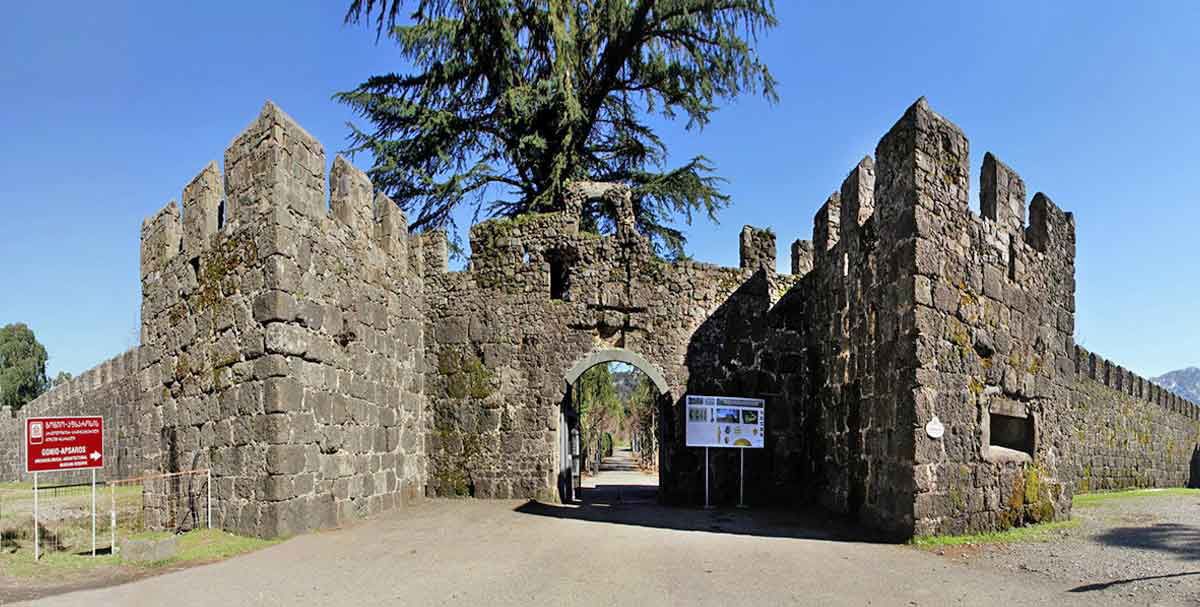
The fortress of Gonio is located ten miles south of Batumi in the Autonomous Republic of Adjara, a short distance from the Turkish border. Known as Apsaros in antiquity, the site was first occupied by the Romans in the 1st century CE as part of a defensive line of garrisons in the Black Sea region. The fort was initially a timber structure reminiscent of a temporary military camp before being built in stone.
During the 2nd century CE, the fort was home to a substantial garrison of five cohorts, or around 2,500 men. However, by the 4th century CE, it appears to have been abandoned or declined significantly as the main Roman military presence in western Georgia shifted further north to a site near the present-day village of Tsikhisdziri, where Emperor Justinian built the Petra Fortress in 535. Archaeological evidence indicates that Apsaros experienced a revival in the 6th century, and the walls display signs of Byzantine and Ottoman repair work.
The walls of the rectangular fortress are five meters tall and run for 900 meters around the perimeter. The fortress originally had 22 towers, of which 18 survive today. The ruins of a bath, mosque, and sewerage and water systems can be found inside the fortress. Remnants of military barracks have also been identified, though most of the Roman buildings inside the walls appear to have been made of wood.
According to the 4th-century Christian theologian Sophronius, the Apostle Matthias (who replaced Judas Iscariot) was crucified and buried at Gonio-Apsaros. A gravestone within the fortress walls claims to mark the site of the apostle’s resting place.





